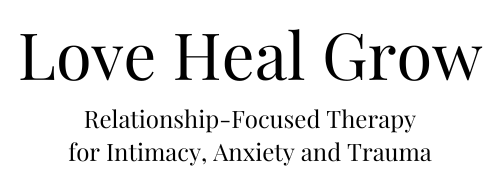
Spoiler Alert! If you have not seen Encanto, this article contains spoilers for the movie.
We encourage you to watch it if you have not yet; it offers some excellent views into mental health topics (such as dealing with Intergenerational trauma), family dynamics, and migration, and it has extremely catchy songs!
Now, let’s get into the topic of the day, intergenerational trauma in the movie Encanto.
What Is Intergenerational Trauma?
Before we can get into how the movie Encanto is a great example of intergenerational trauma and how to heal from it, we need to establish exactly what this type of trauma is.
Now, Intergenerational trauma is different from other forms of trauma because, essentially, it is a trauma that is passed on from one generation to the next. Often these negative experiences are passed down in unspoken or subtle ways that the younger generations may not even fully understand — but are heavily affected by.
How the Madrigal Family Is an Excellent Example of Intergenerational Trauma
So, how are the Madrigals a good example of this type of trauma? Well, if you’ve seen the movie, you know that Abuela Alma was traumatized when she lost her husband as they were fleeing their home in search of somewhere safe to raise their three children.
The movie takes place when Alma’s children are grown and have their own children. Now, this third generation of the family has not experienced the trauma Alma went through, but they are all still affected by how Alma runs the family. Abuela Alma has passed down certain coping mechanisms, expectations, and even fears to the generations after her, affecting how they react to problems in their lives.
How People Cope with Intergenerational Trauma
Speaking of responding to challenges, there are four primary ways that people tend to cope with Intergenerational trauma — and Encanto does an excellent job of illustrating all of them with its characters.
Denial
The first common coping mechanism for intergenerational trauma is denial. Abuela and Mirabel are both great examples of this particular coping mechanism in the movie. Both women spend the majority of the movie denying their own personal traumas.
For Abuela, this means refusing to acknowledge the loss of her husband, home, and sense of security. Instead, she projects an illusion of control, power, and usefulness to the town through her children’s gifts.
On the other hand, Mirabel dismisses her own trauma — not receiving a gift like everyone else in her family. Instead, Mirabel constantly pushes the feeling of not being special or good enough to the side, which prevents her from confronting and resolving that trauma.
Withdrawal
Another common coping mechanism for intergenerational trauma is withdrawal. This is best illustrated by Bruno in the movie. When Bruno saw the vision of Mirabel, he hid from his family. He feared what his vision would mean for Mirabel — who was shown in his vision to possibly be the cause for destroying the magic of la Casita and the Madrigal family — and for himself.
Lashing Out
This coping mechanism is another one that is shown by Abuela in her interactions with Mirabel. Remember that, just like in real life, Abuela does not cope with her trauma in just one way; she displays two of these common coping mechanisms — as do many people in their lives.
In Encanto, Abuela is so terrified of losing what she has fought so hard to protect — the magic she has held as the miracle of their family for two generations now — that she lashes out at Mirabel. Typically this appears in the form of constantly dismissing or isolating Mirabel from the rest of the family. Still, after Isabella’s “What Else Can I Do?” song, she also verbally lashes out at Mirabel.
Blaming Themselves
The final common coping mechanism for this type of trauma is self-blame. A great example of this in Encanto is Luisa, Mirabel’s oldest sister. In her song “Surface Pressure,” Luisa links her own self-worth and identity to her ability to serve others and take on their burdens.
How Can Intergenerational Trauma Be Healed?
Just like any other trauma, there are ways to heal and move on. Here are some of the ways that the Madrigals are able to heal from their intergenerational trauma.
Understand It
You cannot do anything to heal past trauma and move forward from it if you do not understand it. Simply challenging and rejecting a cycle that has been going on for generations will not help you get to the root of the issue and move on.
This is shown at the end of the movie when Mirabel and Abuela speak to each other and truly understand each other and their roles at the end of the magic. Mirabel does not simply blame Abuela for everything that has happened; she takes her hand and shows compassion for everything that she has done for the family, but she shows her a new way to help the family going forward.
Getting Out of Survival Mode
When someone experiences trauma, they typically go into survival mode. This is exactly where Abuela is throughout the movie until the end, when she and Mirabel speak to each other. Abuela is still holding on to the feelings of fear, loss, and vulnerability that she felt when she lost Pedro. Mirabel helps her to realize that this survival mode is not meant to be her whole life and that she can move on and live her life where she is now.
Breaking the Cycle
As mentioned above, to really address and heal Intergenerational trauma, you must break the cycle. This could be a number of people looking to heal or a single person going to family or even individual therapy. When one person breaks the cycle, space is made for healing to begin. In Encanto, this happens when Mirabel stands up for everyone in the family and shows Abuela what role she has had in the destruction of the magic.
If Encanto really struck a chord with you, we hope this little dive into this topic helped you see just how effective movies can illustrate our pains. If you are trying to break the cycle of intergenerational trauma in your own family, please do not hesitate to reach out to us at Love Heal Grow.
























